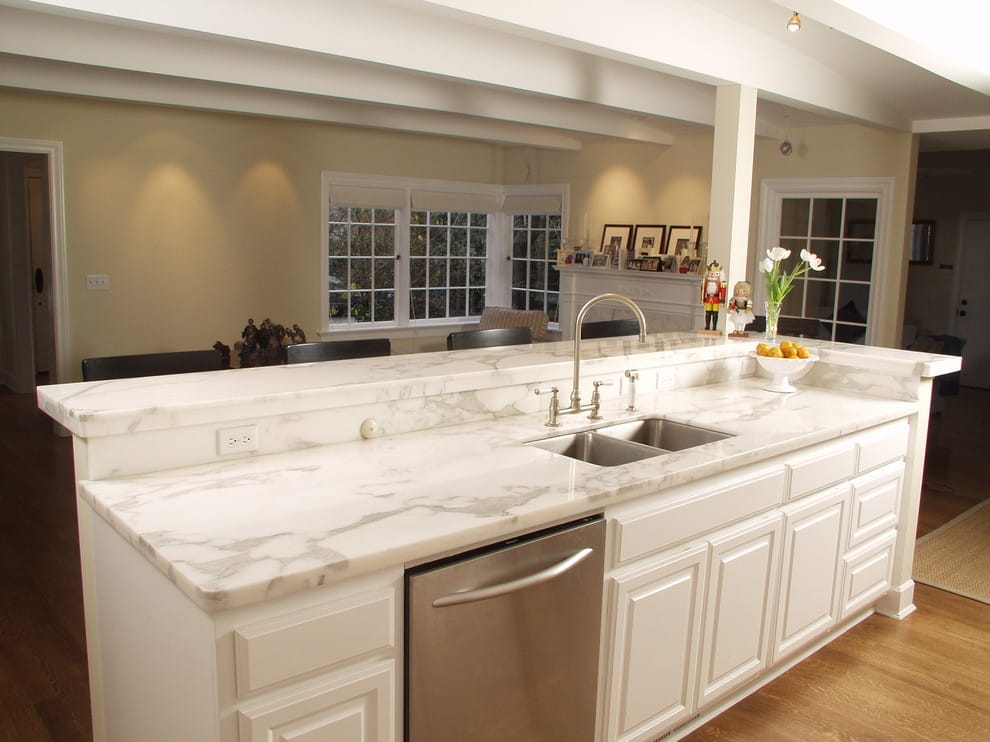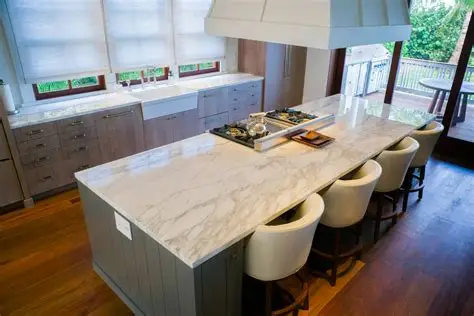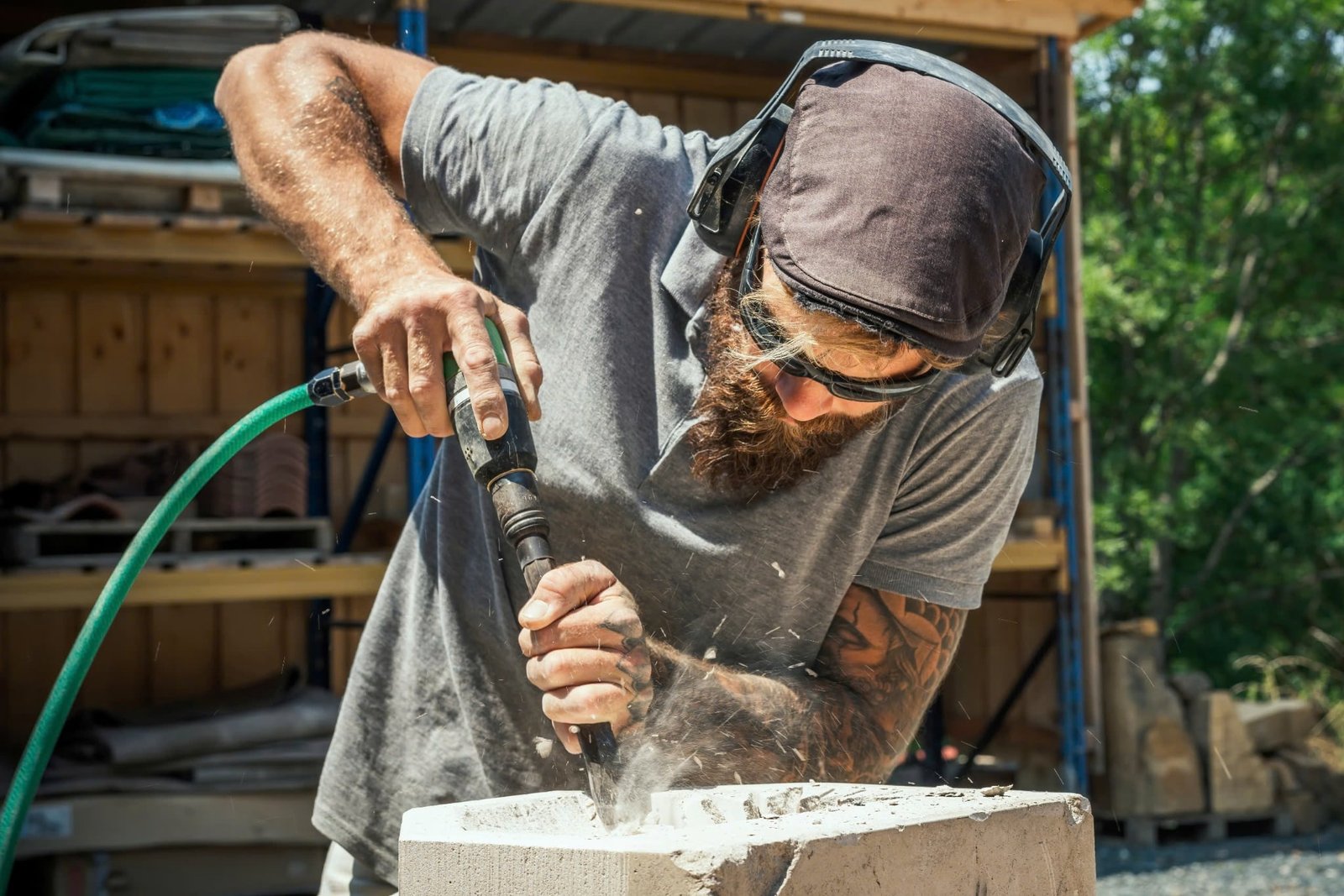
Granite countertops are one of the most desirable materials for kitchens and bathrooms.
Granite countertops are one of the most desirable materials for kitchens and bathrooms. With their stunning appearance, resistance to heat, and extreme durability, granite surfaces such as black granite countertops, white granite countertops, or even exotic options like blue pearl granite countertops continue to be a top choice. But what if your granite countertop cracks?
Don’t worry—this problem is more common than you might think, and it can usually be fixed without having to replace the entire slab. In this guide, we’ll walk you through how to fix a cracked granite countertop using safe, effective methods and professional insights.

🧱 Why Do Granite Countertops Crack?
Despite being one of the strongest natural stones, granite can crack under certain conditions. Common causes include:
- Improper installation (lack of support under the slab)
- Settling cabinets or structural shifts
- Extreme temperature changes (thermal shock)
- Heavy impacts near cutouts or edges
- Unsupported overhangs or cantilevered sections
Even polished granite countertops and honed granite countertops can develop cracks, especially around sink or stove cutouts.
📌 When dealing with large granite slabs for countertops, always use lifting clamps to avoid injury or additional damage.

🧰 Tools & Materials Needed to Fix a Cracked Granite Countertop
To fix a cracked granite countertop, gather the following:
- Granite epoxy or resin (clear or color-matched)
- Masking tape
- Razor blade
- Acetone or granite-safe cleaner
- Toothpick or applicator
- Clamps (for structural cracks)
- Sandpaper (400–800 grit)
- Granite polishing compound
For more severe cracks, professional granite countertop installation services may be needed.
🛠️ How to Fix a Cracked Granite Countertop: Step-by-Step
Step 1: Identify the Crack Type
Cracks generally fall into two categories:
- Hairline cracks – thin, often superficial, usually cosmetic
- Structural cracks – deeper, more serious, may separate the stone
Step 2: Clean the Area Thoroughly
Use acetone or a granite-safe cleaner to remove grease, dust, and debris. This ensures better epoxy bonding. Let the surface dry completely before moving to the next step.
Step 3: Prepare and Tape the Area
Apply masking tape along both sides of the crack to keep excess epoxy from spilling onto the rest of the surface.
Step 4: Apply Epoxy
- For hairline cracks: Use clear epoxy.
- For visible or colored cracks (e.g., in brown granite countertops), use a tinted epoxy that matches your stone.
Use a toothpick or small applicator to work the epoxy into the crack. Slightly overfill it, as it will shrink as it cures.
Step 5: Clamp the Countertop (if needed)
For structural cracks, gently realign the stone and secure it with clamps to ensure a tight, even bond. Let the epoxy cure fully—typically 24–48 hours.
Step 6: Level and Polish the Area
- Remove excess epoxy with a razor blade.
- Lightly sand the area with fine-grit sandpaper if necessary.
- Buff the repaired area with a granite polishing compound to restore the original shine.
📌 Related: How to Fix a Chipped Granite Countertop
🧼 How to Prevent Future Cracks in Granite Countertops
- Provide proper support beneath overhangs or large spans.
- Never stand or sit on your countertops.
- Use trivets for hot pans to avoid thermal shock.
- Avoid dropping heavy items near sink cutouts or edges.
- Seal your granite regularly. Learn how to seal granite countertops.
These tips apply to all variations, including custom granite countertops, granite countertops with white cabinets, and granite countertops for outdoor kitchens.
🧠 Is Granite a Felsic Rock?
Yes, it is. Granite is classified as a felsic igneous rock, meaning it’s rich in silica and lighter in color. This composition contributes to its strength and resistance to heat.
🏡 Are Granite Countertops Still Popular?
Definitely. Despite the rise of quartz and other engineered stones, granite countertops remain a favorite for their:
- Unique natural patterns
- Long-term durability
- High heat resistance
- Minimal maintenance with proper sealing
Many homeowners still view them as the best granite countertops for kitchens, especially when considering cost to install granite countertops and long-term ROI.
🔄 When to Hire a Professional
While small cracks can be DIY-fixed, consider professional help for:
- Wide or multiple cracks
- Separated seams
- Sink cutout fractures
- Matching colors or finishes
Search for:
- Top-rated granite countertop installers near me
- Granite countertops in [city name]
- Granite countertop showroom [location]
- Where to buy granite countertops at wholesale prices
🧾 Pros and Cons of Granite Countertops
| Pros | Cons |
|---|---|
| Heat and scratch resistant | Prone to cracks if not supported properly |
| Beautiful natural patterns | Requires sealing |
| Durable and long-lasting | Difficult DIY installation |
| Adds home value | Repairs can be tricky |
Want a comparison? Explore Granite vs Quartz Countertops and Natural stone vs engineered stone countertops for better decision-making.
📌 Conclusion: Cracked Granite Countertops Can Be Repaired
Discovering a crack in your beautiful granite surface can be alarming—but it’s often fixable with the right materials and techniques. Whether you’re working on affordable granite countertops for modern kitchens or high-end custom slabs, maintaining and repairing them ensures longevity.
For more insights, check out:

